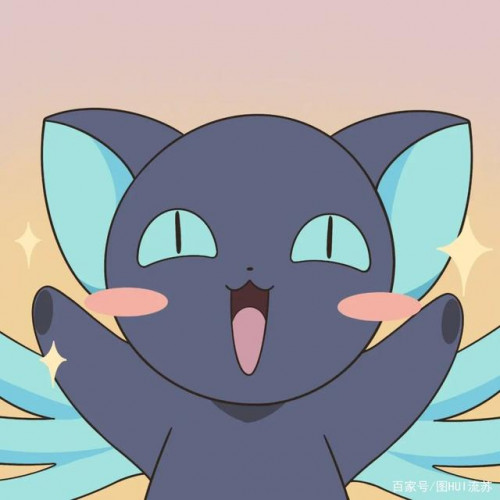Making History: Bats to the Rescue

Bats are a big help to plants because they devour leaf-munching insects, according to researchers at the Smithsonian Tropical Research Institute in Panama. The scientists conducted their investigation by covering plants with plastic and wire-mesh structures that let insects in but kept large bug-eating predators out. The research team then compared three groups: plants that were covered during the day (when birds are looking for food); plants that were covered at night (when bats are awake and hungry); and a control group of uncovered plants (open to all comers). The result? Plants sealed off from the bats had more leaf damage and were more infested with insects than the other two groups. While previous studies have extensively documented the beneficial relationship between birds and plants, scientists "have completely overlooked the important ecological role of insect-eating bats," says Margareta Kalka, the study's lead author. The Smithsonian research reveals that bats might do more to help sustain forests than we previously thought, says Kalka.

Laurie Anderson

Laurie Anderson's career has ranged far and wide since she emerged in the 1970s as an avant-garde performance artist and scored a hit on the pop charts in 1980. Recently, Anderson gave a talk at the Smithsonian's Reynolds Center. She spoke with the magazine's Kenneth R. Fletcher.
What's the message in your work? If I had a message, I would write it down and e-mail it to everybody. I would save a lot of paint that way. My work is more about trying to create images through words and pictures. I want to evoke a reaction more than explain anything clearly. I don't like things to be confused, but I like them to be multifaceted.
You started out in the 1960s and 1970s as an artist and you became a pop hit in the 1980s. How was that transition? I didn't know anything about the pop world. I was just an artist in New York and I had made a record that I was distributing by mail order. People would call me up on the phone and say, "Can I get this record?" I would go over to a carton, pick it up and go to the post office with it. I had pressed 1,000 records of something I had done on an NEA grant called O Superman . Then I got a call one afternoon from a guy in Britain who said "I'd like to order some records. I'll need 40,000 Thursday and 40,000 more on Monday." So I said, "Right. Okay. I'll get right back to you."
I called Warner Brothers and said, "Listen, I need to press a bunch of records, could you help me with it?" And they said, "That's not how we do things at Warner Brothers Records. What we do is you sign an eight-record deal." And I was like, "What?"
So that's what I did, because I thought that could be interesting. I tried very hard not to be seduced by that kind of world. I had a lot of fun with it. You get out of a car and everyone is screaming, it was just funny for me. They were like, "Can I get your autograph? Oh my god!" and "It's really you." For me I felt like an anthropologist.
In 2002 you were NASA's first artist in residence, Why you? Because I have a reputation for being a gear head and a wire head. It was a really great gig. I went to mission control in Pasadena, and I met the guy who figures out how to color the stars in the photos taken by the Hubble Space Telescope.
The opportunity came about completely out of the blue, as many things are in my life. Somebody called and said "Do you want to be the first artist in residence at NASA?" and I said "What does that mean in a space program?" and they said " Well, we don't know what that means. What does it mean to you?" I was like "Who are you people? What does it mean to me? What are you talking about?"
You've also worked at McDonald's. Yeah. I began to think, "How can I escape this trap of just experiencing what I expect?" I decided maybe I would just try to put myself in places where I don't know what to do, what to say, or how to act. So, I did things like working at McDonald's and on an Amish farm, which had no technology whatsoever.
What do you need to "escape" from? At heart, I'm an anthropologist. I try to jump out of my skin. I normally see the world as an artist first, second as a New Yorker and third as a woman. That's a perspective that I sometimes would like to escape. It's why in my performances I use audio filters to change my voice. That's a way to escape as well.
To become somebody else? Yeah, to have another voice. If you sound different you find that you have different things. If you sound like (high voice) a little kid or (low voice) you sound like a guy that's just sort of lost. It's just a way to switch perspectives and that's really important to me.
At the Smithsonian, you gave a lecture about Andy Warhol and his "Little Electric Chair" series. Why Warhol? I feel like we are living in Andy's world now. It's the world that he defined in so many ways and his obsessions with fame and violence and ego. You just look around and go, "Wow, he was doing that 30 years ago!"
American culture was going that way and he nailed it. It's completely fascinating how he came up with those categories and American life became that way.
Why the electric chair? I think for me it combines a lot of things. One was this idea of tabloid stuff. We don't allow images of people being electrocuted, for example. Another is the factory image, the multiple stuff, it's a kind of death factory. People pass through that and it involves technology as well in a way, it's the power of electricity....
Are you running out of time? I am running out of time. My assistant is waving his hands, saying "You have to go now or you'll be dead!"
Kenneth R. Fletcher on “Four for a Quarter”

Kenneth Fletcher graduated with a master's degree in journalism from University of Maryland, where he covered agriculture and the environment for the Capital News Service, in 2007. From there, he became Smithsonian's writing intern, contributing primarily to the magazine's Around the Mall section. I recently caught up with Fletcher, who has since left the magazine to freelance from Latin America, to chat about his experience reporting and writing "Four for a Quarter," in our September issue.
What drew you to this story? Back in April, Nakki Goranin came to the American History museum to give a talk about her new book. I thought it would be a great story. The pictures in the book are very arresting. They're very intimate portraits unlike any other historical photography I had seen. And Goranin's enthusiasm is contagious. She spent years and years crisscrossing the US and Canada to put together a comprehensive history of the photobooth. That's dedication.
Had you used photobooths before? If so, what memories had you captured in them? I didn't really grow up in the photobooth's heyday. I do remember seeing them around as a kid but never actually used one. After speaking with Goranin the first time, I went to the Web site photobootet and looked at the list of remaining classic chemical photobooths. There happened to be one at a mall just a few miles from my house. I had to give it a try. I headed over there one Sunday afternoon, fed a few crumpled bills into the machine and sat through the four shots, trying to figure out what expression I wanted on my face. Chemical booths take only a few minutes to develop the pictures, so I sat in the food court anxiously awaiting my strip. When it finally popped out of the slot, the strip showed three teenage girls crowded into the booth making funny faces. There must have been some malfunction and I got the strip of whoever was in there before me. So it's likely that later that day some teenagers were very disappointed when they got a strip of four boring pictures of me.
Do you think they will be on your radar now? That you'll look for them in malls and things? I'm sure that I'll notice photobooths more now that I've done the story, and probably start rattling off obscure photobooth history and the pros and cons of digital booths to whoever is with me. And I might even get in a booth again and hope that this time my picture comes out.
What do you think is behind the photobooth's longevity? Why are sales still up and people still wanting to use them? Goranin and others will say that being in a photobooth is a magical experience. It's true that posing for a machine gives you a freedom unlike any other form of photography. But I think there are less abstract reasons that explain its longevity despite a proliferation of cheap digital photography. It's quick and easy to take your picture in a booth on a whim. It's a very controlled environment, so you know you'll get a decent portrait. And, unlike a digital camera, you almost instantly get something you can hold in your hand and keep.
What was the highlight of your reporting in Vermont? Goranin is really lively; she's got a great personality. In her home she has thousands of photobooth pictures she's collected. When I visited her, she spread a few dozen of her favorites on the table and told me there were 80 years of photo strips there, from 1927 until today. To see firsthand these pictures that people obviously cherished made a big impression on me. I wondered about all the stories behind the photos. Who were they? And what made them decide to enter that booth?




Post a Comment